Eusocial & Colony Behavior in Ants
Biology 342 Fall 2012
Celina Ortiz & Jason Swinderman
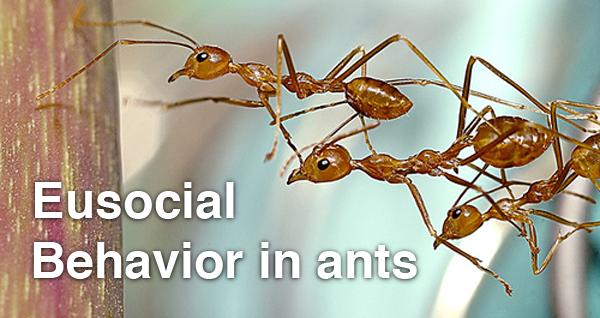
Ants are truly amazing insects that organize into social colonies. This website will explore the proximate and ultimate explanations concerning ants' eusocial and colony behavior, focusing on the four questions of Phylogeny, Ontogeny, Mechanism, and Adaptation developed by Nikolaas Tinbergen. We hope you enjoy your time here!
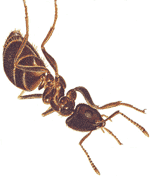
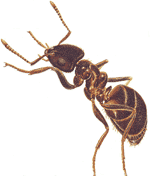



 Ants are amazing!
Ants are amazing! 






Ants belong to the family Formicidae, and evolved from wasp-like ancestors between 110 and 130 million years ago. This means they've been around just about as long as flowering plants! There is an estimated total of 22,000 species of ants, and as far as we know all of them are exclusively eusocial insects. But what is a "eusocial" insect, you may ask?
Eusocial Behavior
Eusociality is a form of social organization defined by E.O Wilson as demonstrating,
- A clear division of labour, segregated into castes.
- Generational overlap, which is to say, parents and offspring live together inside the nest.
- Adults cooperating in both nest-building and brood care.
- That only a few females reproduce; the rest are functionally or behaviorally sterile.
Colony Behavior
The nests that ants form are called colonies. Colonies are a series of underground chambers that connect to each other and the surface via small tunnels. Have you ever seen an ant hill? This is an opening of an ant colony. Rarely can we appreciate the size and immensity of ant colonies from a top-side view. An anthill is very much just the tip of a metaphorical iceberg that extends deep into the earth.
Below is a stunning visual example of an ant colony, rendered with plaster cast.
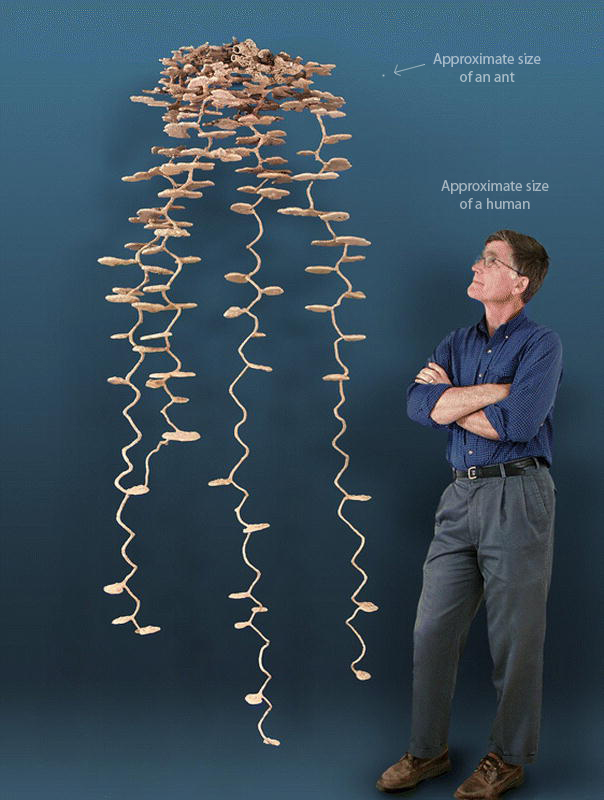
To put things in perspective, researchers have identified an ant supercolony that stretches over 4000 miles across Europe, and is composed of billions of ants. This is a social superoganism that connects thousands of colonies like the one illustrated in the image which behaves to maximize the fitness of the supercolony as a whole.
Ant colonies work as a cohesive social unit, behaving to maximize the survival of the colony as a whole unit with costs for individuals. This colony organization is drastically different from most animal behavior and is found in a minority of species.
Aren't ants awesome? Yes. Yes they are.
Tinbergen's 4 Questions
Nikolaas Tinbergen defined four basic questions concerning causal and proximal explanations for behavior in the 1960's. These resulted in the following:
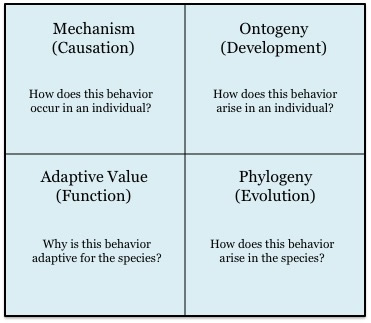
Image courtesy of fellow Reed students.
So, what are you curious about? Do you want to know about...
- What are the biochemical processes underlying eusocial behavior in ants? Go to Mechanism!
- What determines the caste development of an ant? Go to Ontogeny!
- Why having a collective unconscious is good for the ant? Go to Adaptive Value!
- How did ants come to behave eusocially? Go to Phylogeny!
![]()
![]()
![]()
![]()
![]()
![]()
![]()
![]()
![]()
![]()
![]()
![]()
![]()
![]()
![]()
![]()
![]()
![]()
![]()
![]()
![]()
![]()
![]()
![]()
![]()